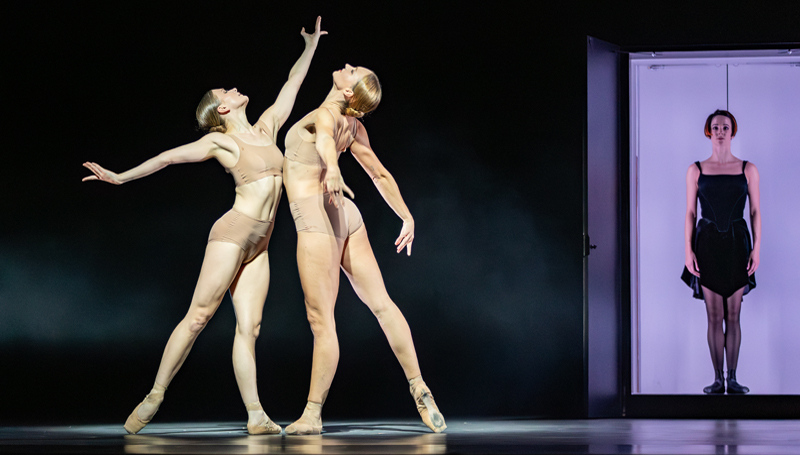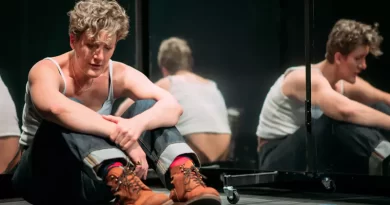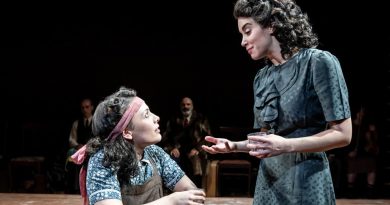“Mary, Queen of Scots”, Theatre Royal, Glasgow
Mark Brown on Clydeside
18 September 2025
★★★★★
The story of Mary, Queen of Scots – the head of the Catholic Stuart dynasty, who was imprisoned and, ultimately, executed on the orders of her Protestant cousin, Queen Elizabeth I of England – is a hugely significant one, not only in British history, but also in the history of the religious conflicts that shaped modern Europe. Mary’s martyrdom has spawned numerous major artworks, including Friedrich Schiller’s play Mary Stuart (which premiered in 1800) and the opera Maria Stuarda (1835), by composer Gaetano Donizetti and librettist Giuseppe Bardari.
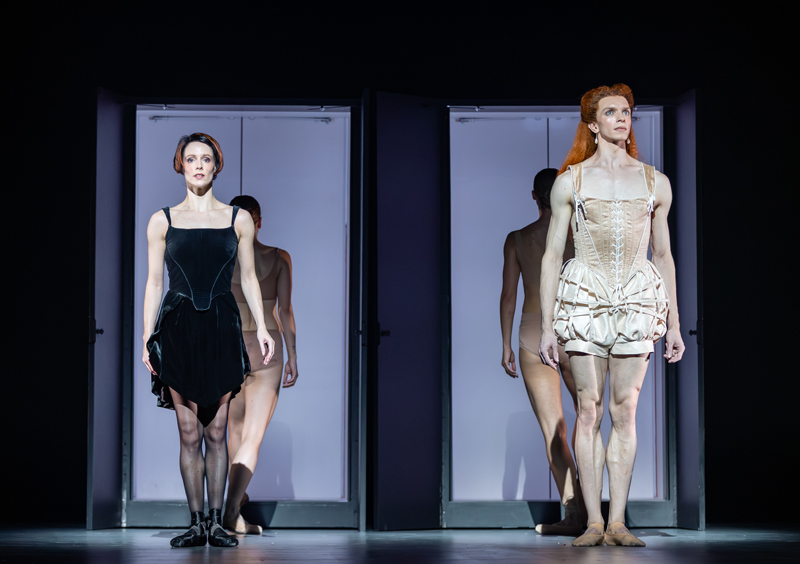
Roseanna Leney as Mary and Harvey Littlefield as Younger Elizabeth.
Photo credit: Andy Ross.
We can now add to such illustrious works the modern ballet Mary, Queen of Scots, which was co-created for Scottish Ballet by choreographer Sophie Laplane and director James Bonas, with an original musical score by Mikael Karlsson and Michael P Atkinson. Having, deservedly, been the toast of last month’s Edinburgh International Festival, the piece continues its world premiere season with a tour of Scotland’s cities.
A work of extraordinary imagination – in visual, musical, historical and narrative terms – this dance-theatre creation owes as least as much to the contemporary dance of the likes of Pina Bausch and Michael Clark as it does to the classical canon. From the opening scene – in which the outstanding Charlotta Öfverholm, unwigged and wrapped in rags, embodies Elizabeth I at the end of her life – one senses that the ballet to come is going to be bold and original.
Dancing in a shard of light, under falling snowflakes, to the strains of gorgeously orchestrated, distinctly Scottish strings, Öfverholm’s Elizabeth is a woman tortured by her memories. Those
memories will form the frame for what is a genuinely world class ballet.

Photo credit: Andy Ross.
Mary Stuart is danced exquisitely by Roseanna Leney who – resplendent in a black velvet dress – endows the ill-fated Queen of Scots with extraordinary grace, dignity and sensual vitality. Men – particularly those famous bisexuals David Rizzio and Lord Darnley – “swim around at her feet like some spilt lemonade” (to borrow a phrase from the Scottish songwriter Chris Thomson).
While Öfverholm’s older Elizabeth looks on in regretful dismay, the younger Elizabeth is played – with the necessary power, aloofness and uncertainty – by the superb Harvey Littlefield (in an act of gender transitioning that is enough to send Graham Linehan and JK Rowling rushing to their social media accounts). As the drama unfolds, the wheels of history are greased by the happy-yet-malevolent Jester, who is played with energetic deftness (and in startling neon green) by Kayla-Maree Tarantolo.
As the tale unfurls, the ballet pops with theatrical imagination. The walls of a defiantly modern set lift away suddenly to reveal a chorus of courtiers in beautifully stylised costumes inspired by the garb of the aristocracy of the Renaissance.
A line of dancers move in ingenious choreography so that, cast in shadow, they create on the wall the menacing and premonitory image of a spider. As the sinister Francis Walsingham (principal secretary to Elizabeth, danced fabulously by Thomas Edwards) ups the ante in his campaign to have Mary incarcerated, the set is scarred with projected graffiti denouncing Mary as a “Catholic witch”, a “whore” and much else besides.
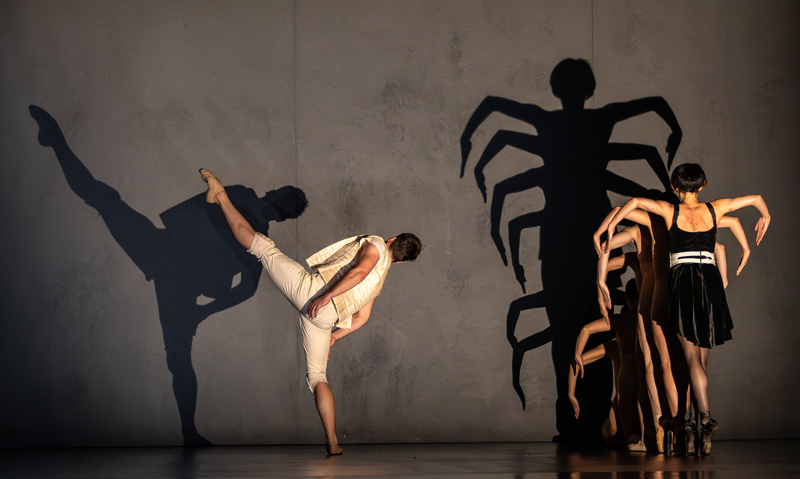
Photo credit: Andy Ross.
Elizabeth’s soldiers – who are frighteningly reminiscent of Roman centurions – are impressively regimented in their bowing obsequiousness. Walsingham’s spies are a malignant, swarming army of human insects. The murder of Rizzio is as powerful a denouement to the first act of a ballet as you are ever likely to see.
If the piece is a visual feast – in its stunningly varied, flawlessly performed movement, and its marvellously conceived designs – its musical score is also a thing of beauty. Karlsson and Atkinson are accomplished and diverse composers, with a string of acclaimed ballet, film, TV and computer game scores to their credit.
From the sumptuous, regularly reprised orchestration inspired by traditional Scottish music, through highly dramatic compositions that are truly cinematic, this score illustrates the ballet perfectly.
Indeed, from its bold, brave beginning to the breathtaking coup de théâtre with which it ends, this astoundingly complete ballet appears to have no chinks in its formidable armour. It will, surely, take its place in the pantheon of great artworks about the still iconic and reverberating story of Mary Stuart.
Touring until October 18: http://scottishballet.co.uk

